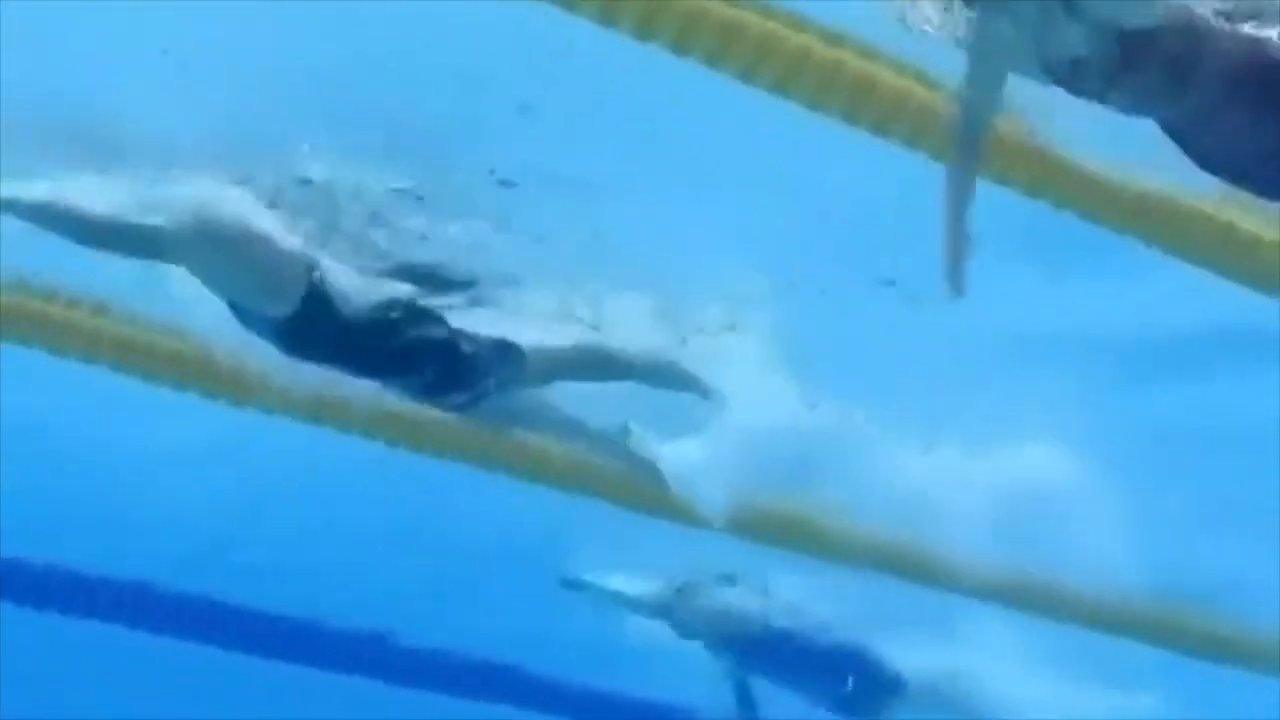Understanding Freestyle Kicking Tempos: The 2, 4, and 6-Beat Kick Swimming
/Hello everyone, it's always a thrill to dissect and discuss advanced swimming techniques with you. Today we're diving into a fresh topic: the freestyle kicking techniques — the 2, 4, and 6-beat kick. Let's break these techniques down one by one.
The Six Beat Kick

Definition: The 6-beat kick is a freestyle swimming technique involving six leg kicks per stroke cycle.
Rhythm: It follows a rhythmic pattern of 3 kicks per arm cycle.
Coordination: The kick is coordinated with arm strokes, typically with a stronger kick as the arm pulls through the water.
Purpose: It provides continuous propulsion and assists in maintaining body balance and position.
Energy Consumption: More energy-intensive than a 2-beat kick, suitable for sprints and short distances.
Technique: Requires a consistent flutter kick, with toes pointed and legs relatively straight.
Breathing: It should be synchronized with arm strokes and kicking rhythm for efficiency. This technique is popular among competitive swimmers for its balance of speed and stability.
The Four and Two Beat Kick

Similarly, a four-beat kick involves four kicks for each stroke cycle, while a two-beat kick uses two kicks for the same period. Considering which technique to use might be confusing, especially for adult learners, recent triathlon enthusiasts, or traditional pool racers. Everyone has different styles, techniques, and strategies based on the distance and speed they're aiming to achieve.
Note: Whether you're new to swimming or an experienced swimmer, it's vital to familiarize yourself with all these kicking techniques. Train and develop all three styles because you'll use them at different intervals during your swim.
Learning Kicks: Personal Experiences and Insights
 Thinking back to my early swimming days, I recall the emphasis placed on learning the six-beat kick. We only referred to it as "kicking," not any -beat kick, due to our youth. This technique required a consistent kick while doing the freestyle stroke. It was only later in life when I realized the importance of getting the timing right, aligning the kick with walking casually. The six-beat kick became a standard starting point, reduction to the four-beat and two-beat kicks over time.
Thinking back to my early swimming days, I recall the emphasis placed on learning the six-beat kick. We only referred to it as "kicking," not any -beat kick, due to our youth. This technique required a consistent kick while doing the freestyle stroke. It was only later in life when I realized the importance of getting the timing right, aligning the kick with walking casually. The six-beat kick became a standard starting point, reduction to the four-beat and two-beat kicks over time.
In contrast, when teaching adult learners. I often start with the two-beat kick because they find it more efficient. It's much more impactful for triathletes, who need to save their legs for cycling and running post-swim. While it might seem complex initially, equating it to the natural occurrence of walking or throwing helps to simplify it.
The Role of a Kickboard in Learning Kicks

The use of a kickboard is a promising initiation to learning the kicks. Holding a board in your hands and maintaining a constant kick is fundamentally a six-beat kick. The key is to merge this new learning with your stroke, gradually reducing the kick frequency to match it with your stroke timing.
When I showcase demonstrations on YouTube or Instagram swimmers often admire and inquire about my perfected technique, which stems from the numerous hours committed to refining it. After all, kicking tenses the legs quicker than an occasional kick or an efficient stroke. Therefore, an efficient, relatively faster six-beat kick allows for a relatively relaxed stroke, contributing to overall efficiency, especially in long-distance swimming.
The Role of Kicking in Propulsion

Consider this: kicks contribute only 10 to 30% propulsion in swimming, specifically in freestyle. Your arms, which consume fewer calories and less oxygen, do most of the work. Therefore, the style I usually adopt when swimming long distances is to utilize a constant two-beat kick until I need to increase my tempo, akin to adjusting your arm tempo.
Prominent coaches advocate for training both styles. For instance, Bob Bowman, Michael Phelps' coach, insisted Phelps only utilize a six-beat kick. The idea was to build maximum fitness and speed. Using a six-beat allows for flexibility to switch to a two-beat kick. This switch will be more challenging if you only train with a two-beat kick.
The Balance Game in Kicking

The context of kick usage also changes based on what you're looking to achieve in terms of distance. Notably, in long-distance swimming, the kick is a balancing act, optimized to improve your arm technique and overall style. Therefore, the speed of your kick, whether propelling or not, influences your stability in the water, facilitating a smooth swimming experience.
To sum it up, remember to always train with a natural rhythm, whether employing the two, four, or six-beat kick. Analyze your performance through videos, note the number of kicks you're taking per stroke, and develop a consistent rhythm.
If you found this discussion helpful and would like to dive deeper into these techniques, feel free to leave your questions and topic suggestions in the comments. Stay connected with us on Instragram, Youtube and TikTok, where we continue to unravel complex swimming techniques. Until then, happy swimming!
This blog post was based on an enlightening conversation between Dan and Markus on the intricate mechanics of swimming techniques and styles. Both are swimming enthusiasts who continuously explore and discuss various facets of swimming to enhance the overall understanding and performance of this incredible sport.
Many elite swimmers rely on straight arm swimming to generate speed in short-distance freestyle events. This approach, however, has specific trade-offs to consider. 👉 Read next:: Bent Vs Straight-arm Freestyle Catch
Your kick sets the rhythm – but propulsion is what truly moves you forward. If you’re ready to connect the dots between your legs, arms, and core for maximum efficiency…
👉 Read next: Feel the Surge – What Propulsion in Swimming Really Means
Discover the mechanics of lift, drag, and the small tweaks that make a big difference in your stroke speed.
